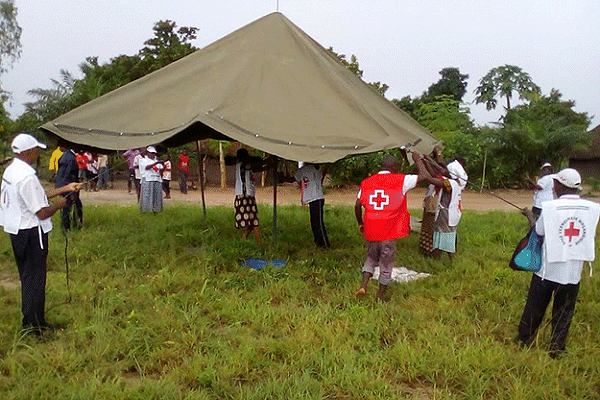
Emergency teams in Mozambique on alert as ‘dangerous and powerful’ Tropical Cyclone Idai bears down on coast

(This story is a press release issued by the IFRC in Nairobi and Geneva yesterday.)
Mozambique is on high alert as Tropical Cyclone Idai barrels towards the country’s central coast.
Red Cross disaster response teams in Zambezia and Sofala provinces are readying response plans in anticipation of the cyclone’s landfall towards the end of the week.
Dr Fatoumata Nafo-Traoré, IFRC Regional Director for Africa, said: “This dangerous and powerful cyclone could pose an extreme risk to tens of thousands of people in Mozambique.
“Our teams are on high alert in anticipation of a potentially destructive landfall.
“We encourage people in Mozambique to remain alert, to keep following weather forecasts, and to respond immediately to any warning messages relayed by authorities”.
Intensity
According to meteorologists, Idai’s intensity is equal to that of a Category 3 Atlantic hurricane. However, at its peak intensity, it may reach the equivalent of a Category 4 or even a Category 5 hurricane.
Depending on its intensity and trajectory, Cyclone Idai could also exacerbate the situation in southern Malawi where more than 115,000 people have been affected by severe flooding.
In Malawi, Red Cross search and rescue teams are ferrying people trapped by the rising water to safety, as well as distributing basic relief items in six of the worst-affected districts.
Mozambique is regularly hit by cyclones. In February 2007, Cyclone Favio damaged or destroyed 130,000 homes and displaced tens of thousands of people.
In 2000, Cyclone Eline hit an already flood-affected central Mozambique, leaving about 463,000 people homeless. Together, the floods and the cyclone killed about 700 people.
Mozambique Red Cross Secretary General Alfredo Libombo last Sunday activated the society’s Operational Emergency Group to coordinate assistance to flood-affected people in Zambezia and Tete provinces, supported by the Belgian, German, and Spanish Red Cross. Interventions include tents (photo) and water treatment facilities, as well as guidance on the continuing importance of evacuating low-lying areas as Idai bears down on the coast. (Photo: CVM)